Just north of Jericho lie the impressive remains of an Umayyad-era palace. When I visited Khirbat al-Mafjar (also known as Hisham’s Palace) in 2018, its psychedelic mosaics were, sadly, covered up. Instead, my eye was caught by a stone-carved rose window with a six-pointed star and hollow circle in the middle. The window had been reconstructed from 106 fragments scattered during an earthquake, which probably took place shortly after the palace was built in the eighth century. Originally, the window would have been placed somewhere high up, allowing streams of light to illuminate the caliph and his courtiers. I was immediately reminded of the rose windows in gothic cathedrals and wondered whether there was any contact-point between this Muslim palace and the Christian architecture of the Middle Ages.
 Diana Darke has been pondering this question for many years. As she writes in Stealing from the Saracens: How Islamic Architecture Shaped Europe, ‘my entire life could be viewed as an apprenticeship for writing this book.’ Her argument is simple: what we think of as quintessentially European sites – a French cathedral, for instance, or a Venetian palace – have been fundamentally shaped by the ‘Saracen’ or Islamic world. (Sometimes Darke says the Middle East, a significant slippage.) She was provoked into taking up her pen after the Notre-Dame fire in April 2019. As troublemakers spread rumours online that the conflagration had been started by a Muslim, or that this terrible accident symbolised the death of Christian civilisation, Darke published a blog titled ‘The heritage of Notre-Dame – less European than people think,’ in which she explicitly connected the famous rose windows of the cathedral with the one at Khirbat al-Mafjar. For good measure, she also suggested that gothic arches, ribbed vaulting and church spires were all ultimately derived from Muslim models. That blog has now been turned into the book under review.
Diana Darke has been pondering this question for many years. As she writes in Stealing from the Saracens: How Islamic Architecture Shaped Europe, ‘my entire life could be viewed as an apprenticeship for writing this book.’ Her argument is simple: what we think of as quintessentially European sites – a French cathedral, for instance, or a Venetian palace – have been fundamentally shaped by the ‘Saracen’ or Islamic world. (Sometimes Darke says the Middle East, a significant slippage.) She was provoked into taking up her pen after the Notre-Dame fire in April 2019. As troublemakers spread rumours online that the conflagration had been started by a Muslim, or that this terrible accident symbolised the death of Christian civilisation, Darke published a blog titled ‘The heritage of Notre-Dame – less European than people think,’ in which she explicitly connected the famous rose windows of the cathedral with the one at Khirbat al-Mafjar. For good measure, she also suggested that gothic arches, ribbed vaulting and church spires were all ultimately derived from Muslim models. That blog has now been turned into the book under review.
How convincing is her argument? Much depends on how far you stretch the word Islamic. Notre-Dame’s twin-towered front, Darke argues, is ultimately based on a fifth-century church in Syria called Qalb Lozeh (literally ‘heart of the almond’, meaning something like ‘crème de la crème’, Darke says). So we have a church – albeit a Middle Eastern one – influencing a later church. It’s unclear to me where Islam fits in here. The crusaders were certainly impressed enough with the Dome of the Rock in Jerusalem to directly take its motifs for their churches, including Temple Church in London. But they thought they were imitating the Temple of Solomon, not anything Islamic. And the Dome of the Rock itself, as Darke acknowledges, drew heavily on Byzantine architectural knowledge: so if anything it was Christians stealing from Muslims who stole from Christians.
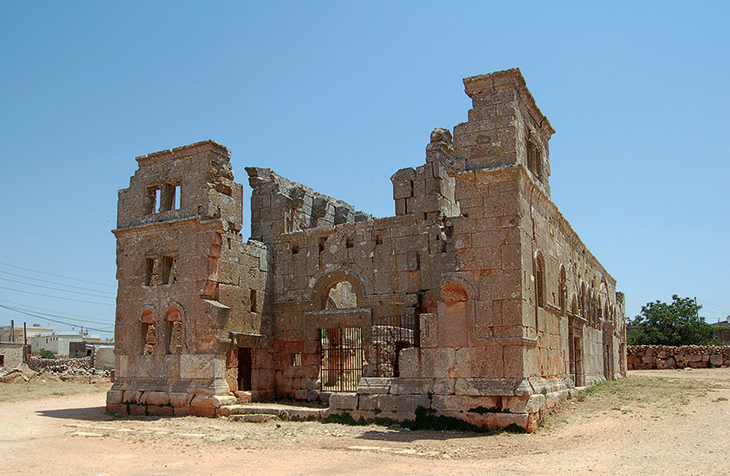
The church of Qalb Lozeh, Idlib province, constructed in the mid fifth century (photo: 2010) Photo: Christian Sahner/Manar al-Athar
Darke is right, however, to remind us that European monuments have historically drawn on many sources. Christopher Wren wrote in his Parentalia that the dome of St Paul’s used a similar vaulting technique to that which Mimar Sinan had utilised in repairing the Topkapi harem domes. Precursors to the gothic pointed arch are found in the Umayyad mosque in Damascus – probably the shape filtered through Spain and Sicily, places which for centuries straddled the contested border between the Islamic and Christian worlds.
Darke is most convincing when she can demonstrate direct influence. The minaret of the mosque-cathedral of Córdoba – a place that still throbs with inter-religious tension 800 years after the city’s reconquest – is now a bell-tower that became a much-imitated model for European churches. A similar square tower added by the Seljuks to the Great Mosque of Aleppo (tragically toppled during the Syrian civil war) has striking visual resemblances to Pugin’s Gothic Revival icon, the Elizabeth Tower at the Palace of Westminster.
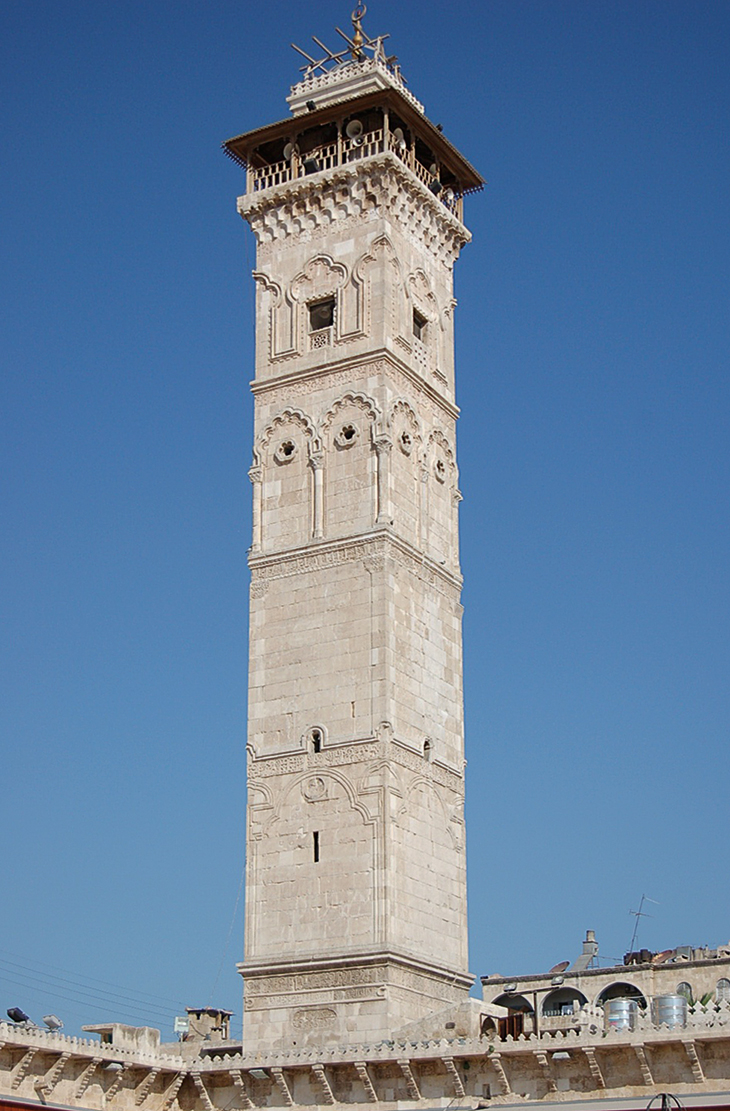
The minaret of the Great Mosque of Aleppo, constructed in the 11th century and destroyed in 2013 (photo: 2005). Photo: Ross Burns/Manar al-Atha
I was intrigued to learn that Venice, so long a trading partner with the east, had copied architectural stylings from Muslim lands. Drawing on the work of Deborah Howard, Darke notes that the facade of the Doge’s palace resembles the Al-Aqsa mosque in Jerusalem. The palace was filled with Islamic textiles, carpets and ceramics, goods often exchanged for weapons – the Arabic word for guns, albanadiq, is derived from the word for Venetians.
Darke puts a lot of moral weight on such places. The ‘prevailing strong hostility to Muslim immigrants arriving in Europe after fleeing war in their own countries […] makes this book a necessary and important corrective,’ she argues. But her logic doesn’t quite hold because more often than not – as she admits – the Islamic designs were taken on because they were thought to be more authentically Christian, not out of some imagined medieval convivencia. And much Umayyad architecture is literally built on classical ruins: the mosque in Damascus was once a pagan temple before it was a church. Its minarets were possibly based on ancient lighthouses: minarah in Arabic means beacon. Such exchanges were often facilitated by violence – the Islamic conquests and the European crusades, both underplayed by Darke. A cosy multicultural narrative can be woven from such threads, but you have to squint.
At points, reading Darke’s book reminded me of those WhatsApp messages from Muslim uncles who love to claim that everything European is actually Islamic. Her heart is in the right place, I know, but one of those Muslim uncles is now president of Turkey, and recently pushed through the conversion of Hagia Sophia into a mosque, thus denying its Christian heritage. Islamic nationalist narratives are equally as damaging as European ones.
Influence, it should be noted, also went in the other direction. The crusaders added two chapels to the flanks of al-Aqsa, which have since been converted into devotional niches that worshippers eagerly flow towards during Friday prayers. Look up from the one on the left and you will see a glorious rose window – an accidental regift from the conquering Christians that Muslims now claim as their own.
Stealing from the Saracens: How Islamic Architecture Shaped Europe by Diana Darke is published by Hurst Publishers.
From the November 2020 issue of Apollo. Preview and subscribe here.
Unlimited access from just $16 every 3 months
Subscribe to get unlimited and exclusive access to the top art stories, interviews and exhibition reviews.

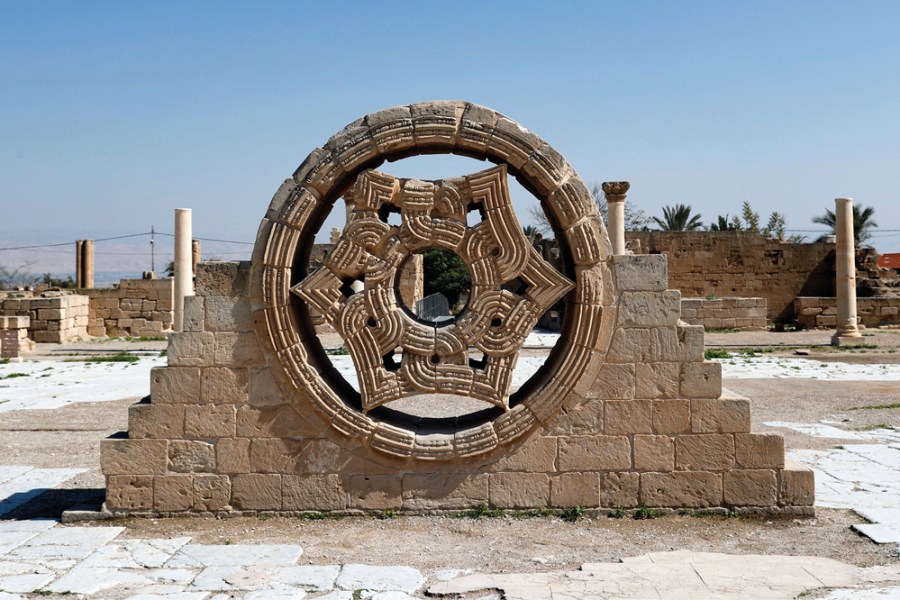
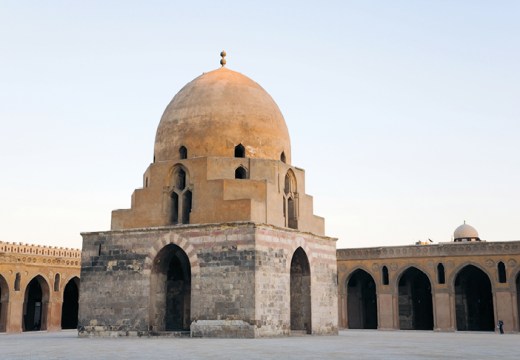
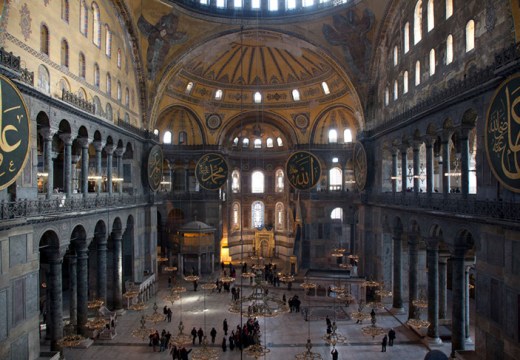
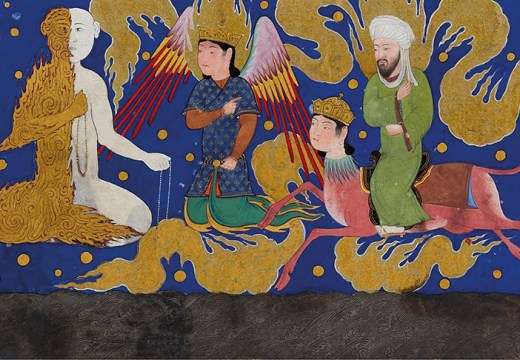









![Masterpiece [Re]discovery 2022. Photo: Ben Fisher Photography, courtesy of Masterpiece London](http://www.apollo-magazine.com/wp-content/uploads/2022/07/MPL2022_4263.jpg)
Has the Fitzwilliam got its rehang right?